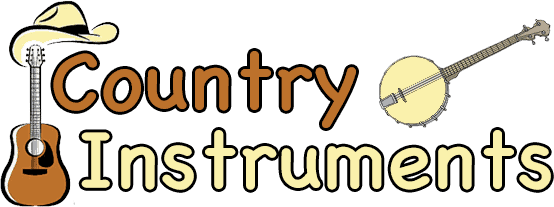All You Need to know about
Country Music Instruments
- How to choose country music instruments
- How to play country music
Country music is a unique genre that you will not confuse with anything else. It was formed on the territory of the current United States and became a symbol of America. Country is characterized by performers’ openness and sincerity, soulful lyrics with deep meaning, a rustic vibe, and, of course, acoustic country music instruments. The latter makes a unique atmosphere and gives a recognizable sound to songs.
According to some experts, a traditional country song should have a banjo, a guitar, and a violin. The first two are responsible for creating the melody and the main mood, while the last one gives the music a more romantic and lyrical vibe. This trio is considered classic for the genre. Indeed, it is most often used by country performers. However, these are far from all the musical instruments you can hear in songs. Moreover, like any other musical genre, country music closely interacts with different types and adopts some elements from them.
Here you will learn everything about what instruments are used in country music, how they first appeared, and in what genres you can hear them most often.
Banjo
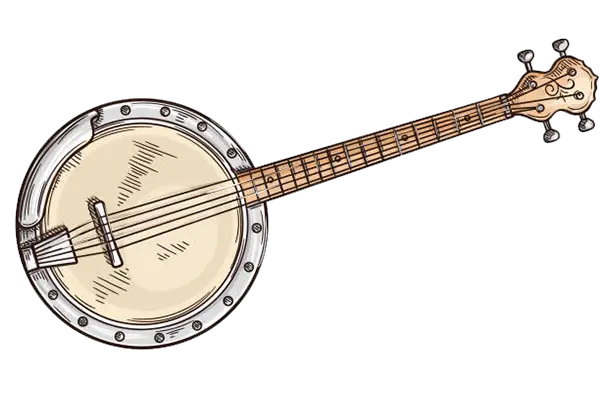
The banjo is a stringed device played with plucks. It has a unique sound that cannot be confused with other instruments. Its bright and resonant “voice” can cheer you up in seconds. It has an acoustic body in the form of a tambourine or drum, to which a neck with 4-6 strings is attached.
It is believed that the banjo was brought from Africa to America as early as the 17th century. It attracted the attention of professional musicians in the 19th century, and in 1830 Joel Walker Sweeney first showed it on stage. The banjo is considered one of the main instruments used in country music or the bluegrass genre.
Banjo Guides
Harmonica
The harmonica is a large family of musical instruments. The sound is extracted from them by breathing in air, which shakes the internal reeds. Musicians can use different techniques to get the sound they want. Various types of harmonicas differ from each other in sound and design.
The first prototype of the modern instrument appeared in Europe in the 19th century and reached North America around the middle of the century. Professional music tracks using it appeared around the 1920s. After some time, it even began to be used to perform classical music, but it still remains a symbol of cowboy country and folk genres.

Guitars
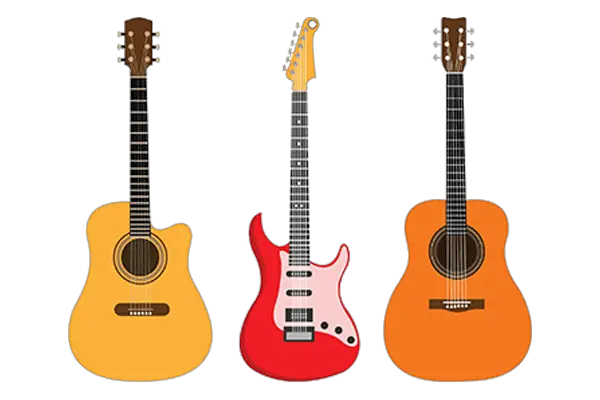
Almost all musical instruments have several varieties, but guitars have perhaps the most subtypes. In their classical form, they are plucked stringed instruments used in almost all musical genres. It is believed that the closest analog of the modern guitar appeared in the Middle Ages in Spain, and from there, it came to America.
It is a lightweight, portable device that you can always take on the road, so it was popular among American nomads. By the way, America is considered the country that gave the world the most improvements: reverbs, humbuckers, condenser microphones, and much more. You can come across different types of guitars used in country music of all sub-genres.
Acoustic Guitar
This type is characterized by a natural tone. The sound from the vibrating strings is amplified by the body resonating. Modern variations might have pickups and volume amps; however, they shouldn’t be used on a classical acoustic guitar. The sound should be extracted from the instrument’s hollow body. It gained the greatest popularity in America in the 20s of the last century.
Among string instruments in country music, the acoustic guitar occupies a leading position in terms of frequency of use. The most popular among folk and country performers are Jumbo and Dreadnought models (the so-called western ones). They have large bodies, which provide volume and sustain.
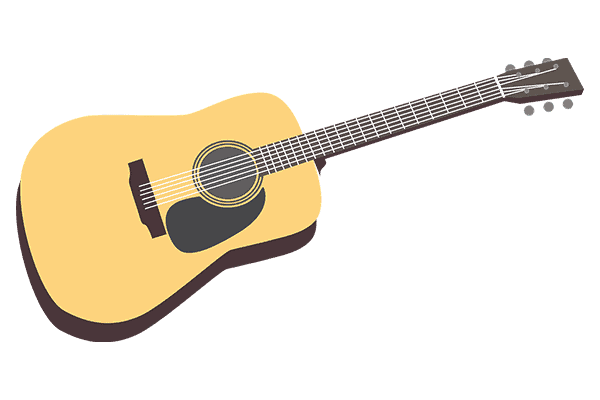
Electric Guitar
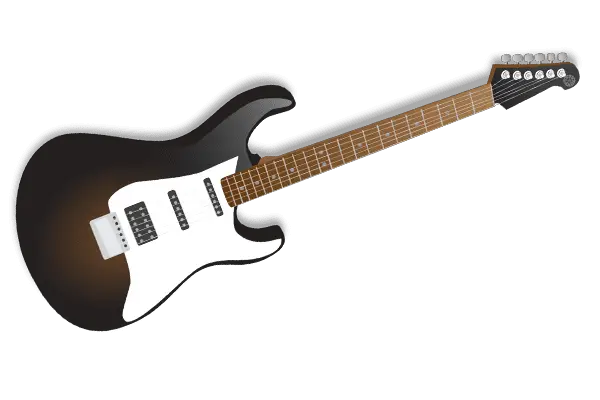
The electric guitar is an improved version of the classical instrument that first appeared in the 20s of the 20th century. It is equipped with electromagnetic pickups that convert string vibrations into electric currents. The resulting sound can be enhanced and improved by various effects.
Country music is considered a rather conservative genre, with acoustic instruments most often used. However, modern performers still utilize electric variations in their songs. The Gibson Les Paul and Fender Stratocaster and Telecaster give the most suitable sound. Country musicians have played the latter since its inception in the 1950s. That said, the genre still retains a natural vibe instead of a massive stadium sound.
Bass Guitar
Even though bass guitars are considered relatively highly specialized devices intended only for playing in the bass range, they regularly make it to the popular country instruments list. They give the music a more voluminous deep sound and are the basis for melodic lines.
There are both electric and acoustic versions, with electric basses appearing first. Only in the middle of the 20th century did acoustic models appear. They have a sound comparable to a double bass and are equipped with pickups to amplify the sound. Bass guitars have replaced double basses in pop, folk, and country music due to their smaller size, smaller weight, and greater volume and sustain. You can often hear them in contemporary, rockabilly, and bluegrass country genres.
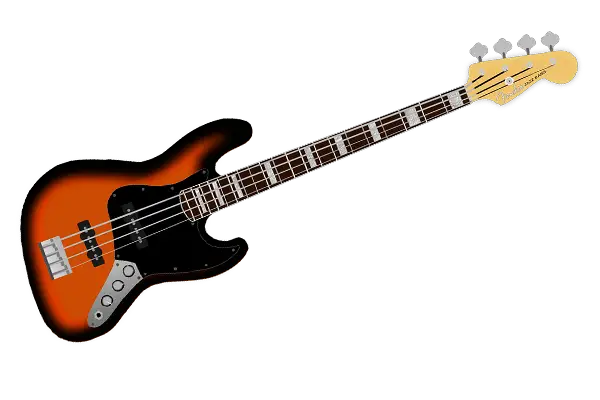
Dobro
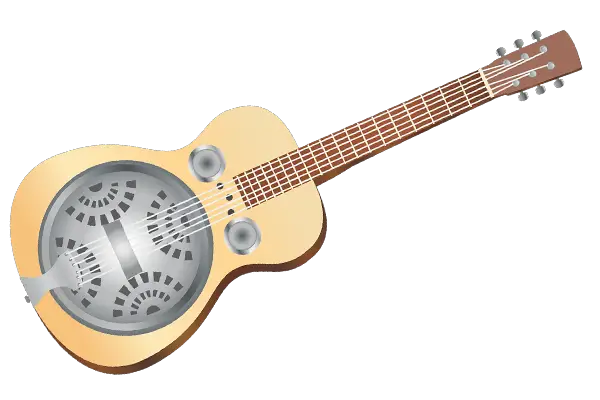
A unique variety of resonator guitars called Dobro appeared in America in the early 20th century. It is equipped with six strings and, unlike the acoustic version, has a built-in metal resonator (hence the name of this group of instruments). Depending on the form of this addition, the sound can be loud, sharp, and sonorous, but at the same time fade rather quickly or softer and more lingering.
Often musicians play this device keeping it on their knees. You can find such guitars in western blues, folk, bluegrass, and country music. Although steel guitars replaced them in the 50s, they are still popular with some musicians and fans of the genre.
Steel Guitars
Steel guitars are another unique variation of this stringed instrument. Their peculiarity lies in the fact that they are played not with hands or picks but with steel bars (hence the name), which artists slide along the strings. This type of sound production is called glissando and involves a smooth transition between sounds without the use of frets.
The method is sometimes called “Hawaiian” because players from these islands played their guitars horizontally. It was popularized in the late 19th century by Joseph Kekuku, and in the 1920s, specialized tools for horizontal use began to be produced. They are now utilized in blues, western swing, bluegrass, honky-tonk, and country gospel music.
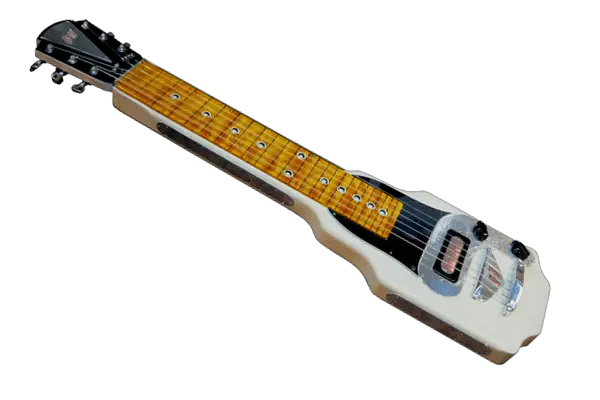
Lap Steel Guitar
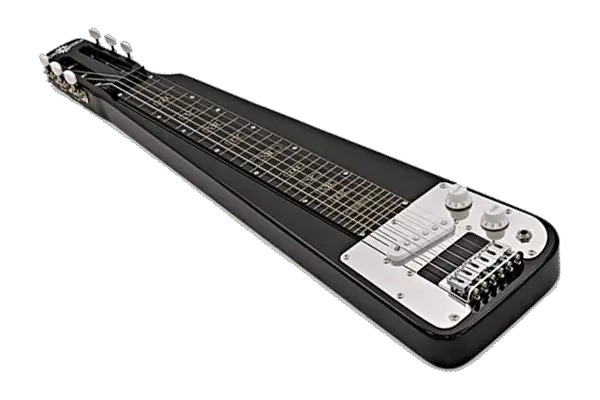
As the name implies, these guitars are laid horizontally on your knees. Usually, the strings are plucked with fingers on one side, and on the other side, musicians slide bars along them. You can find acoustic and electric models, as well as instruments with Dobro-like designs.
A feature of this type of guitar is the focus on one chord, which somewhat narrows the scope of its application. To change a chord, you need to retune the device. Devices with several necks were produced to smooth this shortcoming, but they were expensive. This problem was solved by adding pedals to the guitar.
Pedal Steel Guitar
The pedal steel guitar is an improved version of the lap analog made in the 40s. Thanks to the presence of several pedals, you can change the pitch of the produced sound. In this case, not only both of your hands are involved, but also both legs and even your knees, which requires you to have good coordination and agility.
At the same time, you still should use metal bars to play these guitars. Musicians use them to get a floating and soft sound, or they can make notes bend up. The latter technique has made this type of steel guitar popular in western and country music.
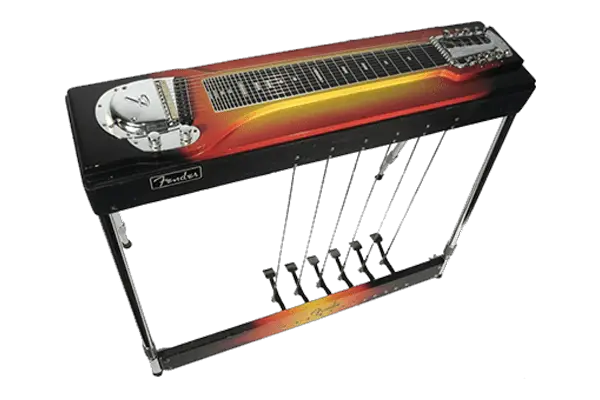
Mandolin
The Italian stringed instrument mandolin is a close relative of the lute. Its distinctive feature is four double strings (eight in total), which give a continuous sound of one note. It has a short neck and pear-shaped body. There are flat, oval, and semi-oval models.
The first analog of the modern version appeared in Italy around the 17th-18th century. In America, it became popular in the 1940s. During this period, musicians experimented a lot with banjos, guitars, and mandolins, thanks to which the latter firmly entered local folk and country music. Although they are not as popular compared to many guitar variations, they still found their niche in these genres.
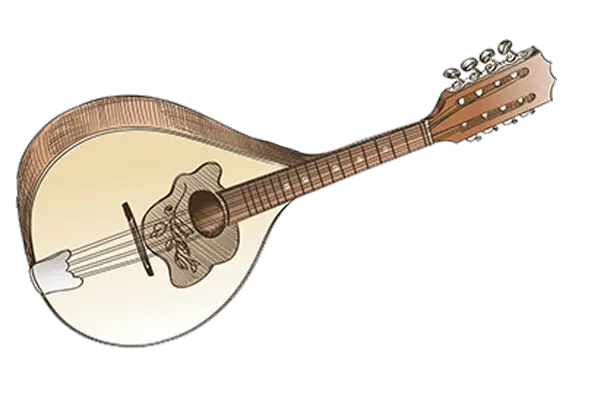
Fiddle (Violin)
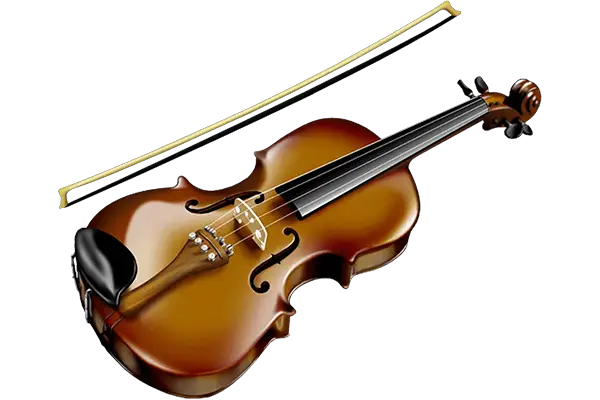
From a constructive point of view, the fiddle is practically no different from the classical “academic” violin, except perhaps smaller dimensions. As a rule, they are equipped with four strings, but there are also three- and five-string models. The main difference is in the repertoire performed with it.
A fiddle is considered a folk violin, playing various ethnic melodies at a fast tempo. As a rule, musicians quickly jump from one note to another, which creates a cheerful and upbeat vibe. This instrument first appeared in Europe in the 10th century, and in the 17th century, it migrated to North America. Performers played fun folk music on it first, and then country and bluegrass bands took it over.
Zither
The ancient Greek instrument cithara received several modern upgrades, and the stringed zither appeared. It was initially created in Germany and Austria around the 18th century and then brought to America in the 19th century. Many countries and regions have devices of a similar design. So, in modern folk and country music of North America, the Appalachian dulcimer is used.
It has an irregularly shaped hollow body and can have from 17 to 45 strings. As a rule, the body part closest to a musician acts as a guitar neck and is equipped with metal frets. It is customary to play the zither with plectrums, and many strings create the effect that two instruments play at once.
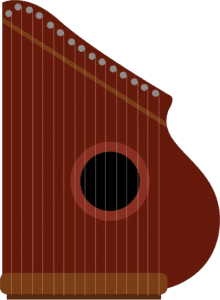
Double Bass
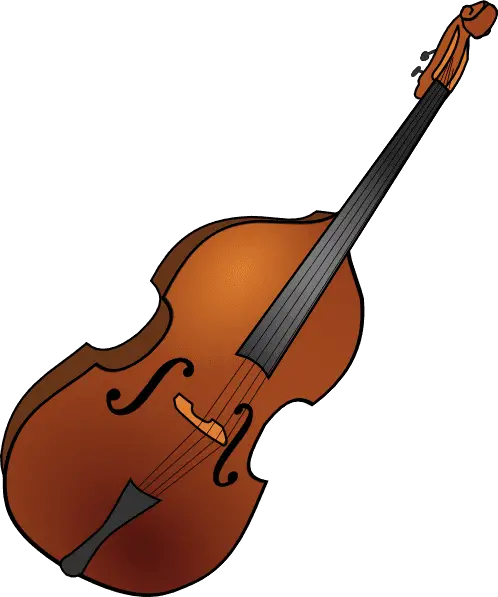
The double bass is a large stringed instrument, which, as the name implies, is responsible for the bass section in orchestras. It has a rather long history and is thought to have originated from the double bass viol. It was first used in the middle of the 17th century, but it only became widespread a hundred years later. It is usually played standing up, but the stringing techniques are similar to those used on violins.
Even though the main scope of the double bass usage is symphony orchestras, it is often used in jazz, rockabilly, and country music. All thanks to its juicy, thick, and low sound. It can not only complement the rhythm section but also fully replace it.
Drums
Drums of various types exist in the culture of many peoples. The drum kits we are used to seeing now appeared around the second half of the 19th century. It was impossible to see drummers at the country performances until the early 40s. However, by the 1960s, they were already firmly established in western swing, bluegrass, outlaw, rock-, and pop-country music.
Modern artists have the same drum kits and other percussion instruments used in country music as in other genres. As a rule, the set includes a snare drum, rack and floor toms, and a bass drum. The set of cymbals may differ depending on the specific direction.
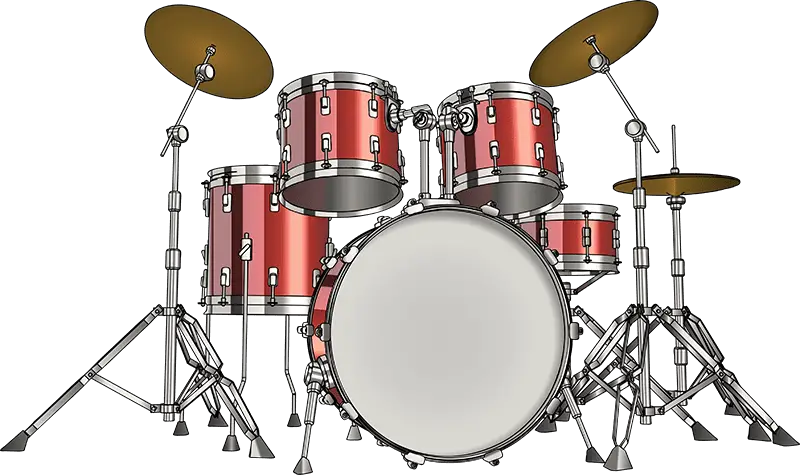
Piano
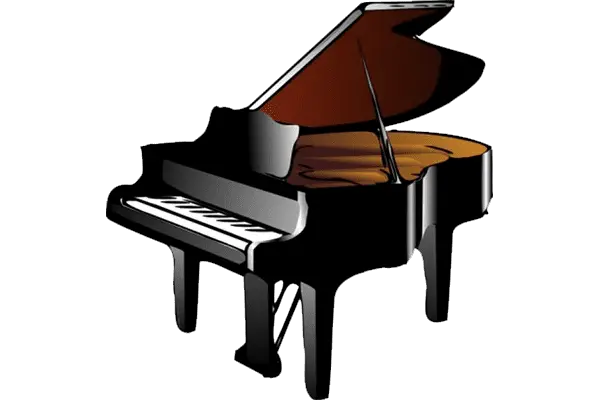
The piano is such an instrument that combines features of keyboard and string devices. The sound is produced by pressing the keys, which trigger the strikes of hammers on strings. The prototype of modern pianos appeared in Italy in the late 17th and early 18th centuries. Since then, it has undergone significant changes in both appearance and sound. On its basis, synthesizers and electronic pianos were invented in the 20th century.
Perhaps it is one of those instruments that are most widely used in all musical genres. It’s popular in jazz and folk as it gives freedom of improvisation and sounds excellent in combination with any other device.
Accordion
The extensive accordion family includes several similar musical instruments, but the piano variation is the most widely used. The date of the first device invention is known for sure; it is 1829. It came to North America almost immediately after that, where it became a hallmark of a group of genres called Americana. It includes bluegrass, folk, western swing, alt-country music, etc.
Accordions were used in combination with violins and guitars, first at various events and then at concert venues. With it, musicians can create both a cheerful atmosphere as well as a melancholy and minor vibe.
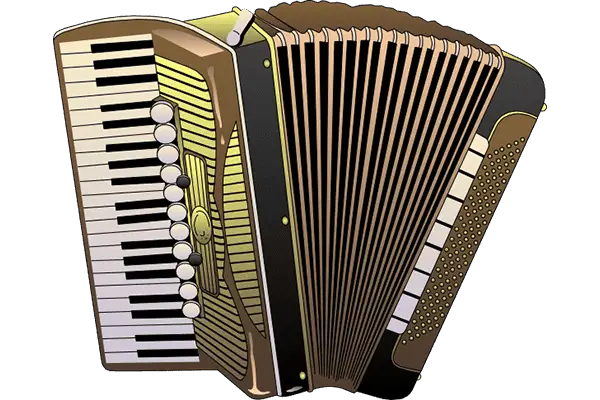
Autoharp
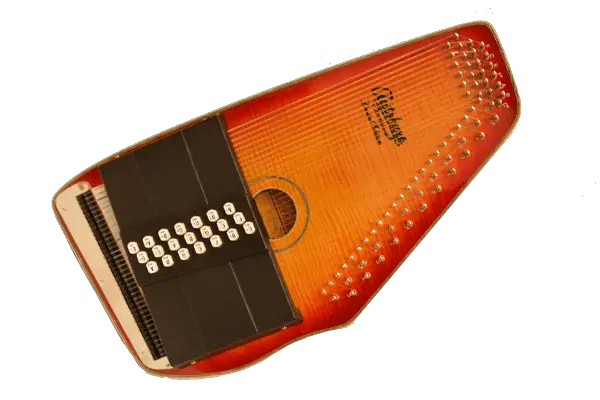
Autoharps can be considered the zither subtype. It was invented in America and Europe at about the same time, in the late 19th century. In its shape, it is a bit like a zither and a classical harp, equipped with a special mechanism that blocks those strings that do not belong to the chord you need. 36-string models are the most common, but 48-string options are available.
Musicians hold the autoharp vertically, press it to themselves, hit the piano mechanism with one hand, and pluck the strings. This position gives them access to the entire surface of the instrument, allowing for a wider range. The autoharp can be used as a standalone device or in combination with other country devices.
Washboard
In music, various non-traditional objects can be used to produce rhythmic sounds. A prime example of this is the washboard (sometimes also called frottoir). This simple washing device was first used to create music by the American musician Clifton Chenier in the 40s. Shortly after that, boards were mass-produced as pro instruments. Various metal objects are used to extract sounds from the ribbed surface: spoons, can openers, thimbles, and much more.
It initially found its way into the zydeco genre but then spread to jug bands, skiffle, old-time, and country-blues music. Washboards are used in rhythm sections as opposed to drum parts.
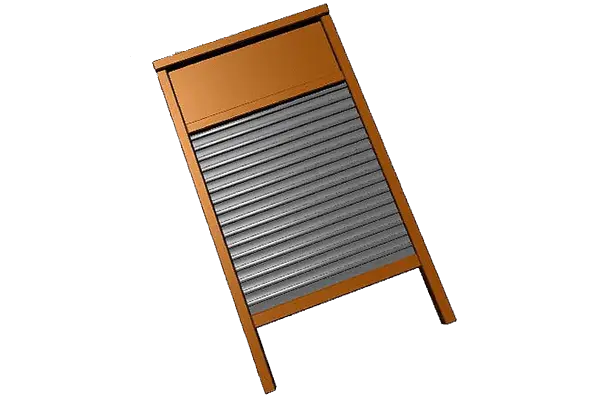
MEET OUR TEAM
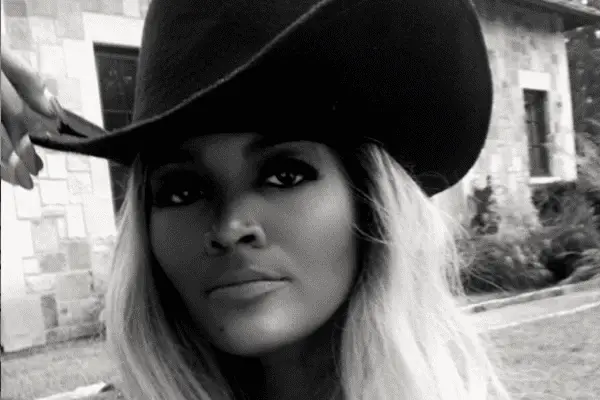
Singer & Author
I am authentically a true country girl at heart. I have only desired to sing one style of music. I have never wavered, in spite of disappointments, delays, rejections, and detours.
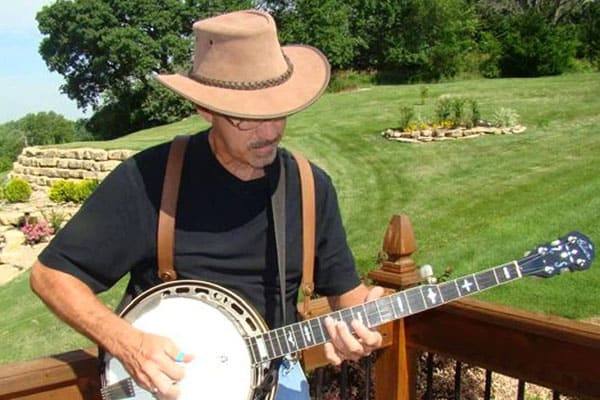
Banjo & Author
I’m Jack Little – an avid country music fan with tons of live country performances in the past. I used to play banjo in a country band with my best friend John Peters, who’s a true country harmonica master. Those were great years and I’m still mastering new banjo playing techniques, writing my own country songs and lyrics, and collecting banjos!
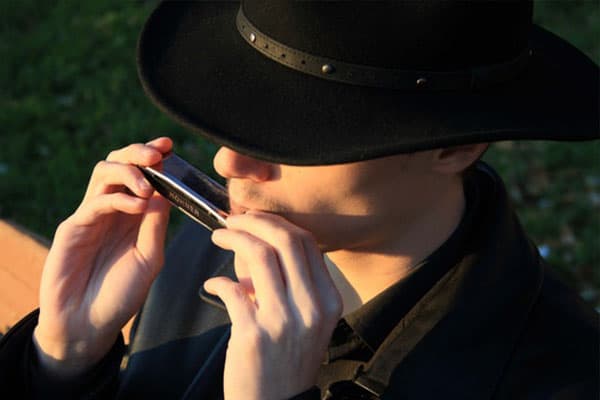
Harmonica & Author
My name is John Peters, and I’m a co-founder and Jack’s and Tayo’s co-editors. My country sole was born when I was not more than 4 years old and my dad brought several country records home. These were the records by Nitty Gritty Dirt Band, Asleep at The Wheel, and Neil Young. I fell in love with the genre forever back then. Before entering the university, I managed to gather a collection of over 1200 vinyl records with both classic and modern country releases.
